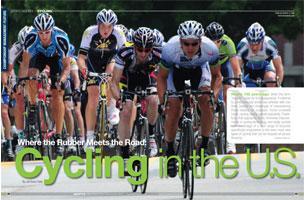
Nearly 150 years ago, when the term "bicycle" made its first appearance, it referred to a mechanically driven two-wheeler with iron tires. Despite the challenges of maneuvering these beasts on unpaved, horse-crowded roads, cycling readily gained popularity. Thankfully, that popularity led to immense improvements in cycling technology, and today cyclists take advantage of a vast range of bicycles specifically engineered to the even more vast types of cycling that can be enjoyed all across America.
Cycling for All
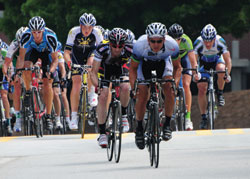 |
| Photo by Dennis G. Esler - www.eslerphoto.com |
For locations looking to get into the cycling game, the options are endless. For inspiration, just take a look around at what's happening in the cycling world.
For competitive cycling, the place to start looking is USA Cycling, the sport's official American National Governing Body (NGB), which oversees all competitive cycling disciplines: road, track, mountain bike, BMX and cyclocross. More than 64,000 members participate in 2,500 USA cycling-sanctioned events annually.
Cycling Destinations
The success of many sporting events depends heavily on the facility itself: the actual building where the event will take place, its amenities and location. But cycling is unique. While some cycling events require a particular facility or course, their success also depends on a community's enthusiasm and, most importantly, preparation for cycling.
So where is biking biggest? According to Megan Cahill, communications director, League of American Bicyclists, cycling has the biggest following in America's metro areas, but it's gaining a passionate following all across the country.
"We're seeing biking spread like wildfire because of America's increasing awareness of several things - physical fitness, the environment, gas prices and traffic congestion," says Cahill.
More biking means more cycling fans, but does it make for a more successful event? Kevin Olson, a competitive cyclist and owner of Jackson Hole News & Guide thinks so.
"I've seen kind of a crescendo of interest in all forms of cycling happen over the last four years or so," says Olson. "The Friends of Pathways group has built a great pathway network that has fueled interest in riding in general. The United Cyclists of Jackson Hole and a local shop, Fitzgerald's Bicycles, have really energized a loyal following of and participation in road cycling, recreational group road rides and formal road races too."
Hit the Road
Road cycling races and events are probably the most ubiquitous of all the forms of cycling, simply because of their range. Road cycling can mean anything from a thousand-mile, sleep-deprived, ultra-athletic race to a 10-mile family fun ride. In Round Rock, Texas, the Outlaw Trail 100 has been offering both competitive and recreational cyclists an annual chance to hit the roads since 1987.
"We strive to provide athletic leisure opportunities for local and out-of-town athletes," says Nancy Yawn, director, Round Rock Convention and Visitors Bureau. "As a Fit City USA and the Sports Capital of Texas, it is important that Round Rock provides numerous sporting opportunities for the community."
The 22nd Annual Outlaw Trail 100 Cycling Tour will kick off on the third Saturday in October and will cap this year at 900 cyclists, around three-quarters of whom will come from all over Texas to participate.
Serious Cycling
Road cycling events require a few key elements: facilities to accommodate the participants' needs, good roads and a local government that is willing and able to divert traffic and keep riders safe. Those are the basics. But the races that are known among ardent fans and competitors as truly great - the kinds of races people travel miles to watch and ride in - those offer something special. It might be amazing scenery, mind-blowing athleticism or just a vibrant energy and a really good time. Some events, like the Amgen Tour of California, showcase all these attributes at once.
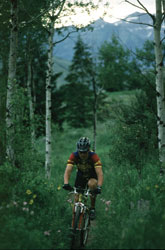 Billed as America's largest cycling event, the Amgen Tour of California is a Tour de France-style road race that attracts some of the world's top professional cycling teams to race a 750-mile course from Sacramento to Escondido each February. As in the Tour de France, the winner of Amgen is the cyclist with the lowest overall time for all the race's stages. And in 2011, Bakersfield, already one of California's premier cycling destinations, hopes to host one of those stages.
Billed as America's largest cycling event, the Amgen Tour of California is a Tour de France-style road race that attracts some of the world's top professional cycling teams to race a 750-mile course from Sacramento to Escondido each February. As in the Tour de France, the winner of Amgen is the cyclist with the lowest overall time for all the race's stages. And in 2011, Bakersfield, already one of California's premier cycling destinations, hopes to host one of those stages.
"One of the nice things we offer for a large commercial event is that we're California's population center point," says Don Cohen, manager, Bakersfield Convention & Visitors Bureau. "We're a four hour drive from 90 percent of the population, making us a great spectator destination. We also have some of California's best and most beautiful cycling routes."
If great cycling opportunities weren't enough proof of its commitment to cycling, Bakersfield is also home to the highest density of ultracyclists in the nation. And when it comes to dedication to the sport, ultracyclists definitely take their devotion to the extreme.
Not for the Faint of Heart
There are a few different answers about the precise distance that qualifies a ride to be called "ultracycling" - some might say a century, a 100-mile ride, qualifies; others insist that the distance must be longer. But suffice it to say, ultracycling is as serious as cycling gets.
The Race Across America (RAAM) is perhaps ultracycling's ultra example. One of the world's longest-running annual endurance events, RAAM takes cyclists over 3,000 miles, touches 14 states and climbs over 100,000 feet. Unlike Amgen and the Tour de France, RAAM is not a stage race. When the clock starts, it never stops until the racers cross the finish line, meaning solo racers, who have no teammates to split the distance with, face the challenge of balancing their need for sleep and food with the demands of the constantly ticking clock.
Other extreme cycling experiences, such as the PEAK Warman Memorial Ride, take ultracycling to the mountains. Held on winding passes through Vermont's Green Mountains, the Warman Memorial Ride, also known as The 6 Gap, pushes riders over 151 miles and 4,000 feet of elevation gains.
But you don't have to be the most daring of ultra-mountain-cyclists to participate. The 6 Gap allows riders to race any combination of the gaps and then, according to the event's Web site "throw in the towel … and head for the coffee shop."
Cycling America's Mountains
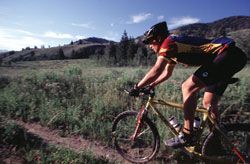 |
| Photo courtesy of Jackson Hole Chamber of Commerce |
Like cycling in general, mountain biking has its own set of subcategories - cross country, downhill, free ride and trials/street riding - each with its own destinations, gear and devotees. And recently, New York's Windham Mountain has become the place to be for mountain biking.
A stop on the Gravity East tour, a USA cycling-sanctioned downhill cycling series, Windham is no stranger to mountain biking events. But the area hosted its biggest race ever this August when the UCI Mountain Bike World Cup returned to America for the first time in more than five years.
"[After Gravity East] the riders had such great things to say about the courses here and about the community," says Kurt Zimmer, media relations/marketing, Windham Mountain. "Pretty quickly, we developed a solid reputation in the mountain biking world. The World Cup organizers were intrigued by our proximity to New York City and the opportunity to expose mountain biking to more people than previous locations would allow. Basically, they visited and liked what they saw."
Of course, if you're looking for mountains to bike in,America's National Parks are also a good place to start. With a network of 400 natural, cultural and recreational sites across the nation, America's National Parks offer some of the best cycling opportunities in the world. Jackson, Wyoming - home to "Taming the Tetons" and the finish line for the infamous, single-day, 206-mile LotoJa (Logan to Jackson) Classic - is no exception. But despite the Tetons' imposing appearance, Jackson actually offers a full range of cycling opportunities, with even more on the way.
Along with a number of other cycling enthusiasts and organizations, Community Pathways Coordinator Brian Schilling is hard at work developing infrastructure and events to satisfy the community's craving for the sport.
"Our strength right now is really that the overall quality of riding here is outstanding," says Schilling. "We have a lot of low-volume traffic roads with fantastic scenic opportunities."
On Track
Yet another of cycling's myriad forms is track cycling, a version of the sport that involves special brake-and-gear-free track bicycles usually raced on specially-built banked tracks or velodromes, such as the Superdrome in Frisco, Texas.
Host to a number of track cycling events throughout the year, as well as open cycling, track cycling development courses and youth track cycling courses, the Superdrome offers a 250-meter track with 44-degree corner banking and 17-degree straightaway banking, the standard for elite racing and the model for Olympic track racing courses. Frisco's Superdrome is one of America's only Olympic-configured velodromes, along with Los Angeles's Home Depot Center Velodrome and the Alpenrose Velodrome in Portland, Oregon.
The Cyclocross Challenge
A sort of bicycle obstacle course, cyclocross races are typically held on a grassy loop, no longer than a few miles, with sections where riders must dismount to cross barriers and challenges. By nature of the event, cyclocross races require specific facilities, and for spectators and racers, the more challenging the course, the better the event. Louisville, Kentucky, home to the U.S. Gran Prix of Cyclocross, has just the place: Louisville Champions Park.
Opened in 2007, Louisville Champions Park is a former private course that the city incorporated into a 400-acre waterfront sports facility development, home to Kentucky's cyclocross championships two years running. The course is enhanced by its former life as a golf course, offering sand traps, roughs and wooded areas to put competitors to the test.
BMX goes Olympic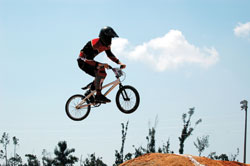 Cyclocross is dynamic for sure, but cycling's action star is BMX, or bicycle motocross. BMX made its Olympic debut in 2008, and America's BMX champions are now hitting the course at San Diego's Olympic Training Center, preparing for the 2012 Games in London.
Cyclocross is dynamic for sure, but cycling's action star is BMX, or bicycle motocross. BMX made its Olympic debut in 2008, and America's BMX champions are now hitting the course at San Diego's Olympic Training Center, preparing for the 2012 Games in London.
"The Olympic Training Facility is an incredible resource, the best BMX facility in the country, and we hope to bring a range of events out to make use of it," says Alan R. Kidd, president, San Diego Sports Commission.
One of America's most bike-friendly regions, both for road and mountain biking, Lane County, Oregon is also getting in on the BMX game. Home of the 2009Oregon BMX championships, the Lane County Event Center is a multipurpose facility, home to Emerald Valley Indoor BMX as well as a convention center and ice rink.
The Pacific Northwest is arguably America's heart of cycling, and Eugene is the ideal example of why.
"We've been recognized by a lot of cycling publications for the huge amount of cycling infrastructure we have around the city," says Lisa Lawton, director of community relations, Travel Lane County. "Just as an example, we've got more bridges for bikes across the river than we do for cars."
Cycling For All, Forever
With cities like Eugene leading the way, and hundreds of other communities following suit, cycling is set to become America's most popular sport. What's more, with the wide variety of cycling types and skill levels, any area with the commitment of its community and government can put together a cycling event without making a multi-million dollar facility investment. All it takes is a little passion, a lot of energy and a group of people who are ready to hit the road.

